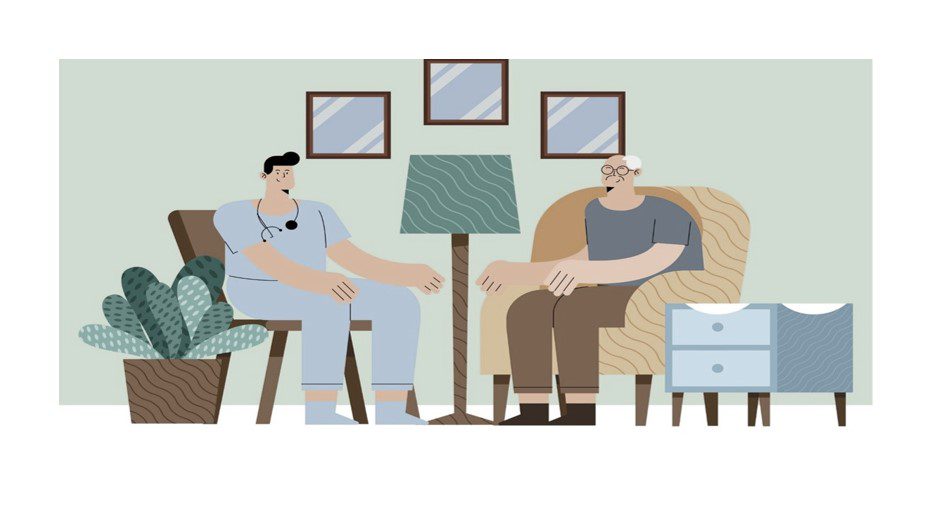The pet and animal health market has seen a recent surge in M&A, signaling shifting dynamics within the industry. While rising pet ownership and increasing pet care awareness are creating positive momentum for the sector, broader trends are pushing major players to venture into the industry.
Many European players are focusing on cross-border acquisitions
M&A activity is particularly robust in Western markets
A significant number of mergers and acquisitions observed recently in the industry indicate a desire for major players to consolidate their positions and expand geographically in a bid to build their global presence and diversify revenue sources. Many companies pursuing geographic diversification are targeting Western markets with well-established pet care, mainly due to high disposable incomes, advanced veterinary services, and a cultural tendency to indulge pets.
An example of such a move is the 2023 acquisition of UK-based Kin Vet Community by Perwyn Capital, a European private equity (PE) investor, to gain entry into the UK veterinary services market. This acquisition aims to capitalize on the UK veterinary services market’s significant growth, which has risen from US$6.4 billion in 2021 to almost US$8 billion in 2023.
The UK-based veterinary sales and service provider, Animalcare Group acquired Australia-based Randlab in 2024 to strengthen its presence in the equine veterinary market. With this acquisition, Animalcare Group will be able to bolster its existing product portfolio and expand from the UK and Europe into Australia and New Zealand.
Similarly, Sweden-based investment company EQT Partners acquired VetPartners, a veterinary care network spread in Australia and New Zealand, in 2023. This move will not only help EQT enter the Australian and New Zealand veterinary markets but also help gain a strategic position in the veterinary industry with a network of 267 clinics and hospitals.
Experts believe that all these recent acquisitions indicate a desire of players to solidify their industry presence and widen their customer base, especially in the lucrative Western markets.
Central Europe is also experiencing a notable uptick
While M&A activity is the strongest in Western markets, some companies are also looking to Central Europe to search for their acquisition targets. An example is the 2024 acquisition of Bratislava-based VetCare Group by AniCura, a Swedish veterinary care provider owned by US-based Mars. This acquisition will add ten clinics to AniCura’s portfolio, three in the Czech Republic and seven in Slovakia. This strategic move also marks AniCura’s entry into the Czech and Slovak markets, significantly expanding its footprint in Central and Eastern Europe and complementing AniCura’s existing presence in Poland.
The developing markets are also grabbing players’ attention
A few players are also showing interest in developing markets such as Asia and Africa, where pet ownership is increasing, but veterinary and pet healthcare infrastructure remains underdeveloped.
Strategic acquisitions are increasing in Africa
Africa is a particularly lucrative investment zone with a favorable market situation for able players interested in investing in the continent’s animal health sector. This is due to barriers in local drug manufacturing, lack of local vets in private practice, and shortage of veterinary drugs.
A recent example of such an investment is Dutch-based animal nutrition company Nutreco’s 2024 acquisition of AECI Animal Health in South Africa. With this acquisition, Nutreco intends to utilize AECI’s expertise in animal nutrition to bolster its operations in South Africa. This move is also expected to allow Nutreco to tap into AECI’s distribution network and manufacturing facility in Burgersdorp, expanding its footprint in Africa’s crucial markets.
Similarly, in 2022, Ireland-based Bimeda acquired Afrivet, an animal health product distributor based in South Africa. This acquisition facilitated Bimeda’s entry into the African animal health products industry.
Foreign players are targeting the growing Asia-Pacific market
The Asia-Pacific (APAC) animal health market is also seeing similar interest from many competitive players. The pet care market in Asia, though still developing in several areas, is experiencing rapid growth. Countries such as China, India, and Japan are seeing a rise in pet ownership and heightened awareness regarding pet health. This makes it a great place for players looking to concentrate on various growth strategies, including collaborations, partnerships, agreements, and M&A, to strengthen their market presence.
An example of a recent strategic acquisition in the Asian market was France-based animal health company Virbac’s purchase of Japanese ORIX Corporation’s animal health subsidiary, Sasaeah, in 2024. The acquisition will help position Virbac as a leader in Japan’s farm animal vaccine market, particularly in the cattle sector. Sasaeah already has a strong presence in Japan and develops a wide range of veterinary products for both farm and companion animals. With this acquisition, Virbac will also gain Sasaeah’s local manufacturing facilities in Japan and Vietnam and its R&D capabilities. It will also strengthen Virbac’s status as a major player in the Japanese animal health market and offer opportunities for further expansion throughout Asia.
Virbac also acquired in 2023 a majority stake in Globion, a poultry vaccines company located in India, as part of its strategy to enter the avian vaccines market in the region and expand its geographic reach.
Similarly, in 2022, Germany-based Symrise AG, the parent company of Diana Pet Foods, which provides palatants for the pet food industry, acquired Wing Pet Food, a leader in pet food palatability in China. This acquisition gave Symrise access to the APAC markets.
Though the acquisition efforts are much lower in the developing markets, with favorable conditions such as increasing pet ownership and rising demands for efficient veterinary care, interested players can expect an overall improvement in market conditions and attractiveness in the future.
Major players are vying for smaller companies in a bid to grow product portfolios
Beyond increasing the geographical reach, the M&A activities aimed at expanding and strengthening companies’ product portfolios are also a significant trend observed in the animal health industry. Many big players are eyeing smaller firms to build comprehensive portfolios that can compete more effectively against other industry giants.
An example is the 2024 acquisition of Boston-based Invetx, which specializes in protein-based animal therapeutics and monoclonal antibody (mAb) development, by UK-based Dechra Pharmaceuticals. This acquisition enhanced Dechra’s specialty therapeutics portfolio for pets and provided access to the growing mAbs market. It will also introduce new technological capabilities, strengthen Dechra’s pipeline, and create significant future growth opportunities for the company.
Similarly, in 2024, the NJ-based Merck Animal Health acquired Indiana-based Elanco Animal Health’s aqua business to enhance Merck’s position in the aquaculture sector. This includes medicines, vaccines, supplements, and nutritional products for aquatic species, as well as two manufacturing facilities located in Vietnam and Canada and a research center in Chile. With this acquisition, Merck aims to strengthen its extensive portfolio, including warm and cold water products, vaccines, anti-parasitic treatments, and nutritional supplements.
Many other acquisitions materialized in 2024 in a similar vein. This includes Animalcare Group’s acquisition of Randlab to enter the equine care market and Australia and New Zealand’s animal health market. Also, South Korea-based Easy Bio acquired US-based Devenish Nutrition to bolster its feed additive and premix operations in North America.
Players are focusing on consolidation to bolster their veterinary service offering
The veterinary services segment is also seeing robust consolidation. Several corporate buyers acquired independent clinics and businesses to strengthen their market position and access the robust customer base of the target companies. Significant consolidation has been visible in the USA and globally for the past three decades.
A recent example is Norway-based veterinary dental care provider EMPET acquiring Smadyrklinikken, a Norway-based provider of veterinary services, including surgery and emergency care, in 2023. EMPET also acquired a Norway-based horse treatment clinic, Hesteklinikken Bergen, in 2024, further expanding its veterinary treatment scope.
Similarly, in 2024, Miami-based at-home veterinary care provider The Vets merged with Boston-based BetterVet, a mobile veterinary service provider, to combine the strengths of both companies and enhance their pet healthcare services across the USA.
Another acquisition along the same line in 2024 was that by Pavo, part of the Netherlands-based ForFarmers‘ global equine organization, which acquired Thunderbrook Equestrian, operating primarily in the UK and Ireland. Thunderbrook offers a diverse range of products, including conventional and organic horse feed, supplements, and herbs, supported by a strong distribution network and online presence. Experts expect this acquisition to enhance Pavo’s distribution capabilities.
Private equity firms are also targeting pet health firms
It is not only businesses within the veterinary or pet sector that are acquiring clinics and animal health businesses, but also companies from other industries and PE firms.
One example is the 2024 acquisition of Ireland-based veterinary products manufacturer Chanelle Pharma by Exponent Private Equity, a UK-based PE firm. Chanelle specializes in R&D and has a prominent position in the market as a producer of generic pharmaceuticals for both human and veterinary use. This acquisition offers Exponent many opportunities for investments in product development and R&D.
Similarly, UK-based PE firm Apax Partners, in 2023, acquired stakes in US-based pet care software service provider Petvisor to focus on accelerating innovation and to position itself as a market leader in the pet software segment.
This trend will continue since the pet care market is expanding remarkably. According to Fortune Business Insights, an India-based market research firm, the global pet care market valued at US$246.7 billion in 2023 is expected to reach US$427.8 billion by 2032. Experts anticipate that this significant growth fueled by the increasing trend of pet ownership will prompt more PE firms to invest in the pet care market.
Pharmaceutical and vaccine segment is seeing acquisitions with rising pet diseases
The growing demand for specialized pet treatments is driving M&A in the pharmaceutical and vaccine segments of the pet health industry. The rising cases of pet and livestock infections and increasing zoonotic diseases are creating a strong demand for improved treatments, conveniently available medicines, and vaccines. This has prompted many players to divert their attention toward acquiring companies in the veterinary pharma segment to gain market access.
An example is the 2024 acquisition of Iowa-based animal pharmaceuticals and vaccines manufacturer Diamond Animal Health by Minnesota-based animal compounding pharmacy, Veterinary Pharmaceutical Solutions. Experts see this acquisition as the first step in VPS’s plans to grow its capabilities, market presence, product offerings, and research capabilities.
Another example is the 2023 acquisition of PetMedix, a UK-based firm developing species-specific therapeutic antibodies for pets, by US-based Zoetis, a global animal health firm. With this acquisition, Zoetis has gained access to PetMedix’s portfolio of antibody drug candidates targeting unmet clinical needs in dogs and cats with chronic and terminal diseases, including oncology and inflammatory diseases.
Similarly, the US-based Better Choice Company‘s acquisition of Canada-based Aimia Pet Healthco in 2024. This move will allow Better Choice to lead internal clinical trials focused on addressing the increased demands for treating obesity-related issues in cats and dogs.
In 2023, Zoetis acquired Germany-based veterinary care company Adivo, which focuses on creating animal therapeutic antibodies. This acquisition will allow Zoetis to leverage Adivo’s existing libraries of species-specific antibodies, facilitating the creation of a diverse array of new veterinary products.
The vaccine market in emerging economies such as Asia-Pacific is also seeing some scattered M&A activity. Virbac’s 2023 acquisition of a majority stake in India-based poultry vaccines company Globion to venture into the growing avian vaccines market can be seen as an instance of this budding trend.
Preventive care and wellness players are becoming attractive targets
A 2023 survey published by the American Veterinary Medical Association indicated that 76% of pet owners consider their pet’s safety and health a top priority. This disposition has also started influencing how pet owners choose food for companion animals, prompting them to opt for organic and healthy treats. All these have made diagnostics, preventive care, and sustainable health a hot topic among interested players, leading to some major acquisitions.
Wellness and preventive care players are attractive acquisition targets
Many acquisitions in the animal health industry are also focused on wellness and preventive care businesses. The factors driving this trend are the rising awareness among pet owners about the advantages of preventive healthcare, early disease detection, and overall wellness of the pets in the long term.
An example is the 2024 acquisition of US-based treat and pet care company Riley’s Organics by Skane-based Swedencare‘s subsidiary business, Pet MD Brands, marking its entry into the organic dog treat market in the U.S. The acquisition will give Pet MD access to Riley’s premium organic dog treats and nutritional supplements targeting coat and skin health, liver support, ear care, etc.
Similarly, Antelope, a US-based company that offers premium pet care products and services, has acquired My Perfect Pet, a US-based brand known for its ‘gently cooked’ dog and cat food. With this acquisition, Antelope can strengthen its portfolio with My Perfect Pet’s nutritionally balanced pet food without preservatives.
Veterinary diagnostics surge as acquisitions drive segment growth
The veterinary diagnostics sector has also seen some recent acquisitions. Mars, currently a leading name in the pet health segment, acquired Cerba HealthCare’s stake in the French veterinary diagnostics firms Cerba Vet and Antagene. Mars made a similar decision in 2023 when it acquired US-based Heska, a veterinary diagnostic and specialized solutions provider. All these acquisitions can help Mars position itself as a major competitor in the pet diagnostics sector.
Similarly, in 2024, US-based Ollie, a subscription service for fresh dog food, acquired Dig Labs, a diagnostic company that delivers real-time health screenings for pets, including stool analysis and weight management. This acquisition also aims at helping pet owners monitor their pet’s food intake and get personalized food intake recommendations to prevent health issues.
We expect the veterinary diagnostics segment to grow significantly, and M&A activity will continue accelerating in the coming years.
EOS Perspective
The flurry of M&A activity in the animal health sector highlights the industry’s significant potential. Along with the existing trends, experts believe there are many more segments interested and able players looking to consolidate their position in the industry can focus on.
Online and mobile pet care is a promising area for businesses considering investment or acquisition within the pet health sector. Companies that can effectively navigate this space will likely capitalize on the increasing demand for online services, likely through acquiring businesses with an established customer base to strengthen their portfolio. It will also help firms enhance their competitive edge through a digital-first approach. The 2024 acquisition of The PharmPet Co by Pharmacy2U, both UK-based firms, can be seen as one of the early steps in this direction. This merger will allow Pharmacy2U to offer pet medicines online to customers.
A nascent trend that could offer opportunities in the future is pet owners’ increasing interest in their pets’ gut and microbiome health. Experts believe this inclination of pet owners will increase in the coming years, creating a massive market for pet foods and supplements, especially those containing probiotics and gut-supporting formulas. This will make profitable businesses in the pet supplement segment a lucrative option for able and interested players to focus on.
Read our related Perspective:
Poop to Pills: Is FMT the Future of Veterinary Medicine?
Sustainable and eco-friendly products are another segment with growing attractiveness thanks to the ever-increasing environmental awareness. As in many other markets, pet owners will seek products that consider environmental impact. With consumers aligning their choices with eco-friendly solutions, we can expect major brands to merge or acquire companies making eco-friendly pet products. The 2024 merger of Chr. Hansen and Novozymes, both Denmark-based firms, to create Novonesis is an example. With this merger, the new company aims to develop microbial solutions and enzymes while focusing on minimizing chemical use and advancing climate-neutral practices.






















